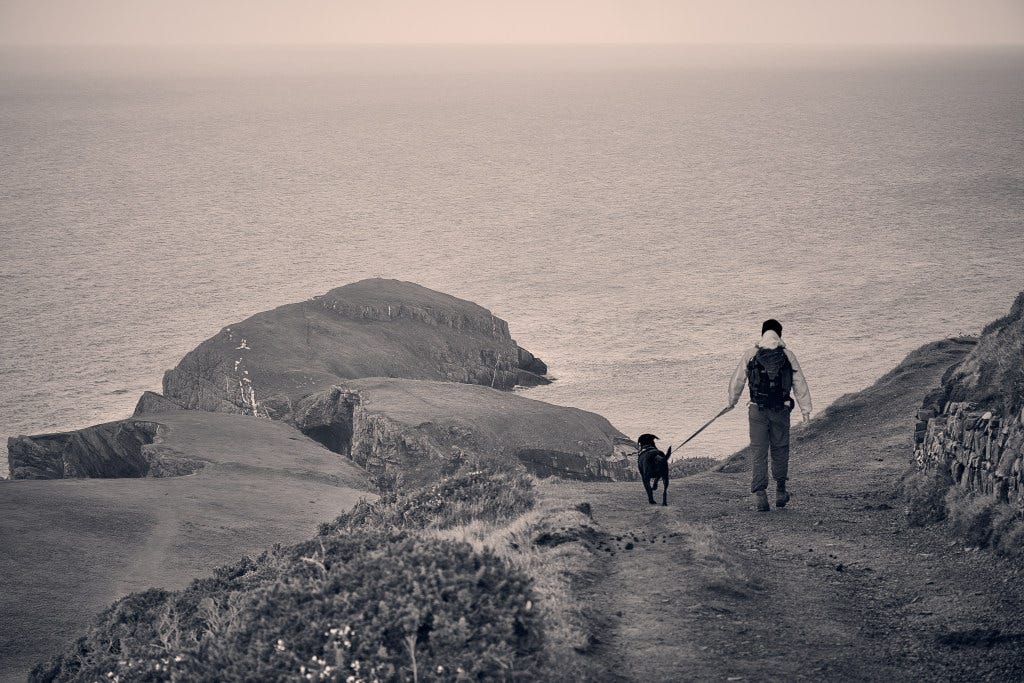A hybrid patronage and product model to reflect the medium and message

The headline image above is a competent image I made recently from a photograph I took at low tide in Limehouse, London. It isn’t for sale; I just did it for personal enjoyment as well as to amuse my audience. That said, I am a professional communicator across many media — having been paid to make public speeches, write articles and reports, create videos, and selling books and art prints. I have also been moderately successful on social media, and use a number of different outlets for my work, tailoring what I say to various audiences and fitting in with the constraints of each platform.
What I am learning is that social media is changing the nature of how creative works are conceived, structured, distributed, and sold — but that the enabling platforms are lagging behind the use cases being developed, and thus are missing out on revenue opportunities and new models to support creative and cultural endeavours. This makes sense when you realise that the existing “major” platforms (like Facebook, Twitter, TikTok) were fronts for nefarious activities, and that their product design stops when their needs for surveillance, social engineering, or trafficking in contraband are satisfied. That opens up an opportunity for radically better models.
Let me bring this to life a bit with my own experience as a photographer. Over the past few years I have generated a reasonable following as a result of me posting the images from my frequent photo walks. I aim to go for a walk every day, whether I bring a camera or not, for my own benefit. I like to appreciate the world around me by capturing it creatively, again for my personal enjoyment. As a collateral bonus, I also get to sell some of my work in product form — initially as calendars, and more recently as art prints. Yet the bulk of my income from doing art isn’t products, it is patronage.

Some of my images, such as the headline one, are worthy of wall space. A few are spectacular, even. Others, like the one above, are pleasing but not so special. That doesn’t matter to me: the goal is to extract the maximum playfulness from every possible situation, no matter what the subject, lighting, or even equipment. Whether the individual image that results is commercially sellable or not is irrelevant. Yet a lot of people connect to my work in its totality, because it comes from the heart. The celebration of beauty (and thus the divine) is a reaction against the ugliness of much of the worldly happenings around us.
No individual image has to “carry the weight” of being so amazing that someone will pay thousands of dollars to blow it up to giant size to cover a whole wall, not that I object to it. I don’t need to carry a large format camera with me, or even use a tripod most of the time, since technical perfection is not required. The sum total of what I do is having little moments of gratitude in daily life, processing them to accentuate what most appeals, and then publishing them as an ambulatory narrative that lets the viewer join me. Because it is located in accessible places and experiences, and offered through my public activist avatar, the sense of presence (and artistic impact) is amplified.
While my output may occasionally qualify as “fine art”, it’s more of a “folk you art” to me. I am sticking two fingers up at the trolls and detractors, while appealing to my fellow Deplorables. The overstressed viewer can drift away from their immediate worries as a series of pretty posts turn up in their timeline. Because most of my art is not for sale, it makes the follower feel special and valued — as there is no ulterior motive of money involved. People know that I am offering little interludes in the timeline to grasp the extraordinary wonder of even a fallen world. There is a shared consciousness, and the art is just a catalyst to remind us of that safety cushion.

I have over time packaged my commercial offer in a number of ways. Initially I used Mailchimp to send emails with essays and a bit of art at the end, and Patreon to get paid, until I was banned from both for telling too much truth and pushing too much beauty. I now use SubscribeStar as a substitute for Patreon, but (apart from this rare exception!) never actively promote it. I make a modest income from nearly 100 supporters, and it quietly atrophies over time. One patron has directly topped me up regularly. I used Create Photo Calendars for doing my Christmas calendar sales push, but they only pay out via PayPal for international users, which put an end to that this last holiday season, as I have quit using PayPal.
You are likely reading this on Substack, which has a lot going for it, and I usually put at least one or two nice photos into each article. Their preferred model is “product via paywall”, rather than pure patronage, but I like to make my work accessible to all, regardless of means. I have created tiers of support at $7/month, $70/month, and $700 a year as a “founder” — with zero upside benefits (although I do send something in the post as gratitude to the founders). Generally when I get paid to do creative work my magic disappears. I can keep my head engaged, but I protect my heart when dealing with commercial and transactional environments. My eccentricity and sense of mischief have to be suppressed, in case the invoice doesn’t get paid.
With the financial help of a fan, I joined Art Store Fronts a few years ago, who do a “white label” art print retail service. Sadly, I feel betrayed by them, and am abandoning the platform. The most basic function — uploading new images for sale — only works some of the time. I might select five files, and two will go through OK, and three might fail. Or all might stall. Or it all works. That’s ridiculous. They have tried to fob me off with technical excuses and largely ignored my complaints. As it happens, I am a world class telecoms network performance scientist. I know that reliable file transfer over unreliable transport is a problem solved long ago. Given how many other breaches of trust I have experienced, this is one too many, and in my heart I cannot market art that makes money for people whose values I do not share.

I have dabbled with NFTs as accompanying products bundled with rare collectible banned book sales. I am foreseeing new models and supply chains forming around NFTs, potentially more on a honour model than everything being contracted and controlled as with traditional copyright. If I published my images via social media, then they could be automatically turned into NFTs. I am not convinced of NFTs as a B2C retail product to end users (yet), as they nature of what is being bought and sold, and the risk involved, is somewhat opaque. That said, I see huge potential for NFTs as a B2B technology that glues everything together.
There could be many services that take the “wholesale” image and then offer to package it — as a fine art print, as a commercial digital image, or as merchandise. The NFT is what shows that appropriate rights have been obtained, and rewards given, but without the image provider needing to have relationships with the final retail outlets. I don’t really want to have to deal with Art Store Fronts or any equivalent platform at all — I am an artist, not a marketer. You don’t want ten spam emails directly from me in the run up to Valentine’s Day, Thanksgiving, or Christmas, or flash sales. It’s not who I am or what I do. I just want you to be able to right click on my image and get the product you want from where you want it.
Cultural creativity isn’t just about making new original works. We need to recognise that there is a lot of value to curation and criticism. In social media terms, curation is what you decide to retweet, being the simplest form of passing the message on, and commenting is criticism. Someone might want to get paid for taking the best of each of my photo walks, or putting them into themes, or bundling images from many artists to celebrate an event. These “ancillary” functions like editing, fixing, curating, quality control, and tagging should also be recognised and rewarded. At the moment the supply chain is broken. People are doing these functions for free and giving their effort away, but that’s not sustainable or scalable.

At the moment social media’s business model falls into one of two basic camps: membership (like Gab, and where Twitter is moving to), or advertising (like Facebook) for brands unrelated to the poster or viewer. I see a space for another model, where the products on offer are mostly cultural, and come from the audience themselves. Gaining donors or patrons should be a first-class part of the design of social media, with the enabling platform getting a cut of the customer acquisition and ongoing revenues. At the moment I can post at the end of my photo walk a text link to support me, but why not have a small unobtrusive “become a patron” link after each post? Social media only sees posts, cultural media adds products and patronage as being of equal design importance.
To make it more real, consider how people who don’t subscribe to my Substack get text added at the bottom of the email. There is blurb on how to pay me, or other products on offer. Writers don’t just do essays, they also produce books, yet Substack has no functionality to embed links to books for sale and get a share of the revenue. Everything is manual, and there is no book selling automation. On Mailchimp, a platform optimised for marketing, it was quite easy to do this, at least in terms of presentation, if not commercials. I would equally be happy for a small Fujifilm logo below my photo walk posts, as I think their products are excellent, and I am happy to promote the gear I use, and get some reward for helping sales. There is no shame in being an ambassador for a brand that invokes passion.
The lines between amateur and professional work are blurring, both technically and commercially. The current model of social media treats people as a vast pool of free labour to be monetised at the product. A shift to cultural media would seek to economically reward all contribution, and join together the disparate creative acts into “valued chains” that show that your effort was meaningful and valued. Social media adds a whole new narrative, curation, and criticism layer to our base digital objects, but the interaction functionality has run far ahead of the economics. My sense is that we have only just begun to explore what is possible. The collapse of some existing platforms (for criminal activity) would be a blessing in disguise, opening up space for innovative new models where culture and commerce are peers.
 Read It Now
Read It Now